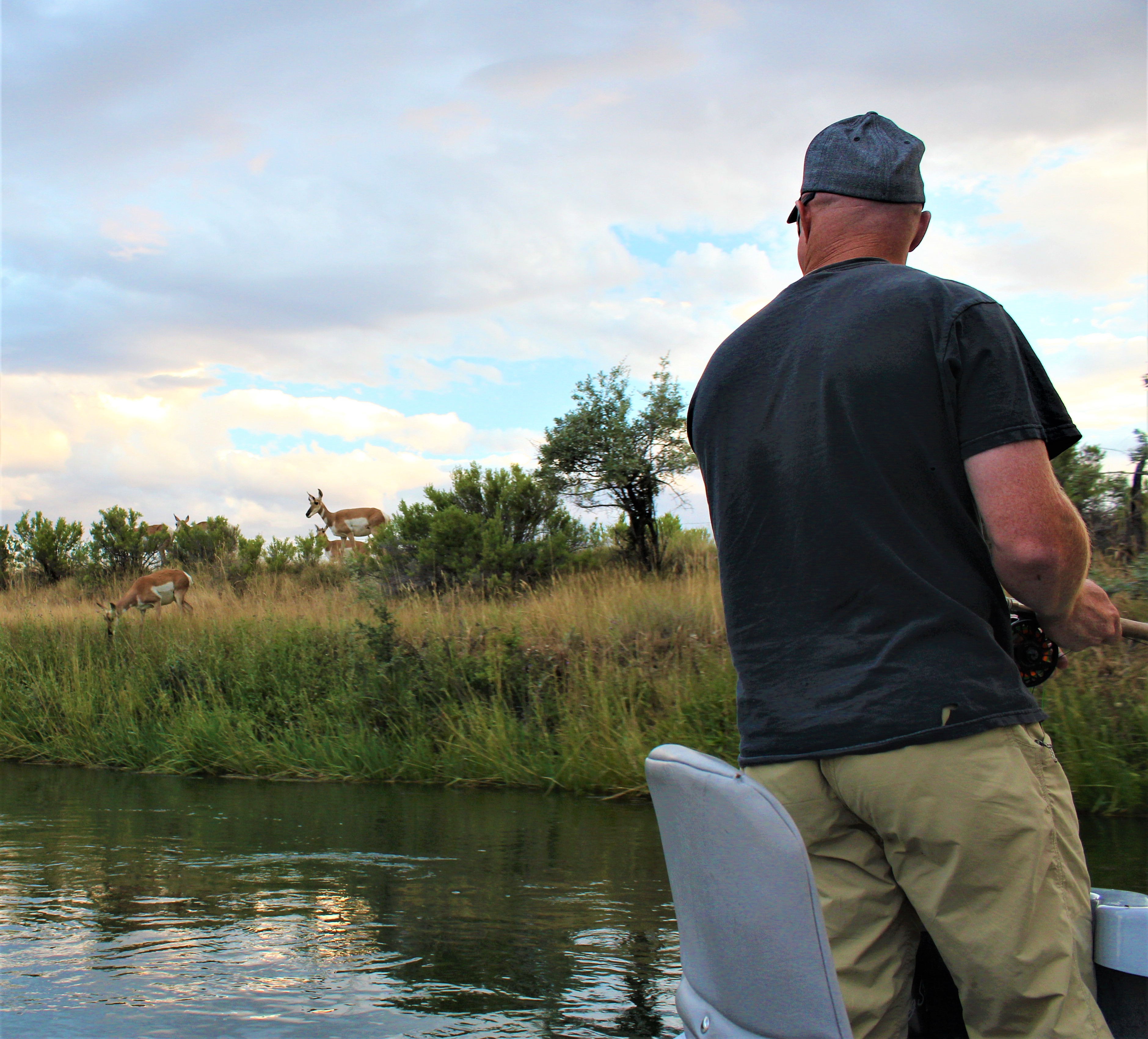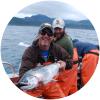People who know me know my feelings about dry fly fishing on Grey Reef. I’m agnostic at best when it comes to floating dries along the banks of Bessemer Bend or out at Lusby’s. I’ll go along with it, I’ll stand there with my comrades and pretend that, at any minute, the surface of the river will erupt with the telltale rings of rising trout. I’ve lucked into it once or twice. And there was this one time, years ago, while messing around along the dusty two-tracks of Trapper’s Route, when I tossed a hopper pattern out past the weed line and a huge rainbow sucked it down. Those kinds of experiences stick with you. They make you want to believe. But I learned how to fish wet flies on this river, and I’ll forever defend my use of split shot and strike indicators.
In Casper, the impromptu farmers’ markets are springing up along CY Avenue. Peaches from Colorado, cherries and plumbs from Idaho, bags of onions with the dirt still clinging to their roots. Hatch chilies are charred in rotating baskets. You can smell them as you drive by. It takes a huge amount of self-control not to pull in each time and depart with a serious wad of cash. A lady in a lawn chair sells little loafs of zucchini bread and salsa she makes herself. September, in Wyoming, is an illusion. It is as if the cold months will never appear. We like to drift along in September, pretending that this pleasant season of hot days and crisp nights will last forever. But, one of these days, you’ll look up, and the chili roasters will be gone.
My friend Patrick tells me that he has several frames of wild honey available if I want them. And I do. I use the smash and strain method to process my honey. It’s the raw, unrefined method that best suits me.
On my front porch, with my radio blasting Wyoming Public Radio, I use a tool to uncap the cells of honey. I choose the late afternoon, when the sunlight strikes my porch just so. I save the wax for other projects. With a spatula, I scrape the honey into a colander lined with cheese cloth. Honey is dense, heavy stuff. But with the sun striking it, it becomes fluid and drains into the bucket I use only for this purpose. I employ a huge plastic tub to cover the whole process, to keep the wasps and bees away from the project. Hoppers flick up from the dying clematis, the under-watered rose bush. Hoppers collide against my legs. They ping off the siding of my house. They’re suddenly everywhere.

Will this be the hopper year we’ve been waiting for? Fishing with hopper patterns is one of the most exciting ways to fish the North Platte. It’s the kind of threshold experience that anglers come from all of the country to experience. And this year looked like a good one.
Hoppers flew in my window and rode shotgun as I piloted my grasshopper-green, 2002 Honda through the Big Tree Area downtown. I saw birds gathering along the streets to pick them off in the evenings. I heard dramatic stories coming from the fly shops and from some of the few guides who readily share this kind of information. There was even a story floating around Casper about a stranger drifting into one of the fly shops with a deranged look upon his face. He was eating a cone of frozen yogurt and said that he’d been fishing so much he had to take the calories as they came. Nervously, he asked the attendant behind the counter if he could purchase all of the size eight foam hoppers in the store. All of them? Yes, all of them. He scooped them up, gathered them in plastic containers, four hundred dollars’ worth, and hurried out into the glare of a September afternoon.
The much-anticipated, often elusive, and fairly unpredictable hopper hatch has dodged me over the years. Either I’m too early, too late, or just too dense too figure it out. I’m daydreaming at Pat’s Peaches when I should be out casting hoppers. I mow my lawn a final time. I arranged to have my sprinkler system blown out. I try to be a productive member of society. But stories about twenty-inch fish crushing dry flies haunt me until I make the right arrangements to go see for myself. Call it research. Call it giving in to mythology and folklore. Call it what you want.
At the boat launch there are legions of hoppers. As my dog runs through the riparian grasses and shrubs, I mark his progress by the clouds of hoppers flickering along his path. But, amazingly, these insects never land in the water. They seem to know to avoid the river. They flip up from the grass, and arc back to the safety of the bank. They come in all sizes, from the tiny lime-green ones that resemble aphids, to the big desert-colored ones that are so heavy they pull the long grasses down to the ground with their weight.
While my fishing partner parks the truck, I catch a king daddy hopper with my baseball hat and—I really hate to admit this, but here it goes—I hurl him out into the current to see if a trout will blast him. Maybe I can get the fish going with this one gesture. Nothing. The hopper strokes his way back to the bank. As far as I can tell, he makes it.

With hoppers you need some wind to blow them into the river. We had plenty of hoppers, but not a breath of wind. And so the float was nearly devoid of action. But once or twice, while I was on the oars, my fishing partner had his hopper engulfed in big, violent takes. The fly line sliced through the darkening water.
When it was my turn to cast, nothing came up. A large beaver smacked the surface of the river with his tail just as I was casting. It made my heart leap. But, alas, I had missed the fabled hopper frenzy once again.
You might say a trip like this was unproductive. But then again, just as we were approaching our takeout at Lusby, seven doe antelope and their fawns came down to water for the evening. My dog growled at them. But they paid him no attention. The evening was cooling and you could taste the distant flavor of a changing season. I saw hoppers rising up among the antelope, crashing against their hind quarters. Things were going to change soon, you could tell. The pronghorns drank until their white bellies swelled.




